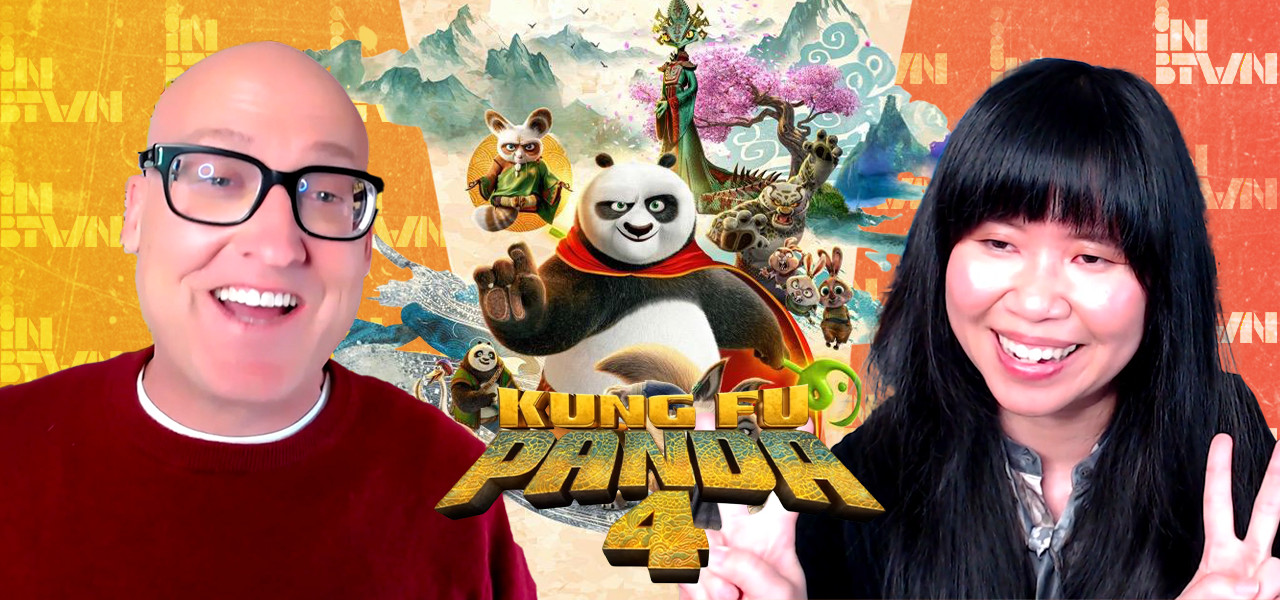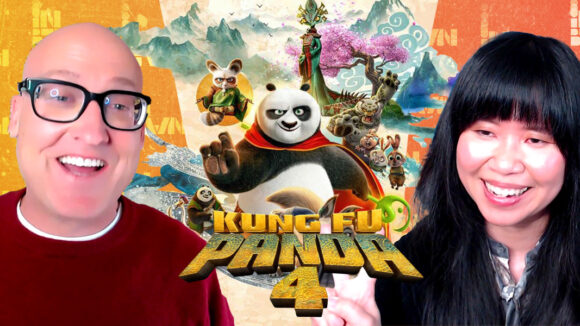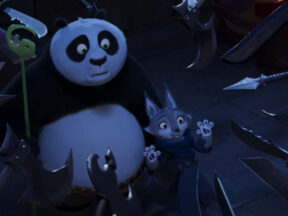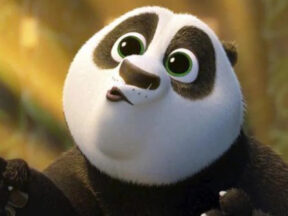

‘Kung Fu Panda 4’ Directors Discuss Character Evolution And Embracing Change
Cartoon Brew, in partnership with our exclusive online event partner INBTWN Animation, recently spoke with Kung Fu Panda 4 director Mike Mitchell and co-director Stephanie Ma Stine to get the scoop on Dreamworks Animation’s latest feature, which is coming to theaters this weekend.
The video is free of major spoilers, and we’ve bleeped out a few minor ones, but if you’re hoping to see the film completely fresh, it may be worth bookmarking this interview and returning to it after a trip to the cinema this weekend.
Our discussion started with the duo explaining how the film’s narrative was mirrored behind the scenes, particularly in their own mentor-mentee relationship. Ma Stine says that one of Po’s greatest attributes is his ability to see the good in everyone, and that’s a virtue shared by Mitchell:
He sees the good and the potential in every single one of the cast and crew and he was able to bring out the best in all of us. I think there are pretty strong parallels there.
For his part, Mitchell says that despite being the lead director, he couldn’t have made the film without Ma Stine’s wisdom and deep knowledge of the Kung Fu Panda franchise:
Stephanie brought a whole new flavor to the franchise and had such detailed information about the franchise. I’ve worked on these other ones, but Stephanie knew more about the previous Kung Fu Panda movies.
Mitchell says that one of his most pressing concerns was maintaining the high standard for interesting villains set by those earlier films:
I think this has the best villains ever created from any animated film. I just think these villains are so rich and so deep and so fascinating.
With any franchise, there is a worry that going to the same well too many times could create audience fatigue. Ma Stine says that was something they paid special attention to when working out the story of Kung Fu Panda 4:
I think the thing so many audiences get tired of with superhero movies is that the same superheroes don’t really change a lot. They might go on a somewhat small, different path, but they’re basically the same characters. I think Logan tackled it really well. What happens when superheroes get old? For us, we can’t have Po be the same exact character every time.
She claims that to justify making the film in the first place, they had to create a new narrative for Po in which he would mature and change, and eventually pass the torch to a Dragon Warrior successor. That’s where the film’s apprentice-becomes-master narrative came from.
Mitchell says that Po’s journey to embrace change will be relatable to the kids and family audiences the film is aimed at, but also to animation industry workers:
I often go from one studio to the next, and there’s a lot of anxiety and worry involved. But I’m hopeful that the story that we told with Po is that when you move onto something else, you’re not losing who you were; you’re building upon it.
That metaphor extends not only to workplace changes, but also to how artists react to new technologies. A 30-year animation veteran, Mitchell has experienced seismic technological shifts in the past and remembers the dread that often accompanied them:
I remember at Dreamworks when it was at Universal, and they pushed all those hand-drawn desks that I had at Calarts into the hallway. It was like a funeral; it was like a graveyard, those old desks. It was terrible, and we were freaking out. We’re like, “What is going to happen?” But they very nicely gave courses in cgi, and you know, this new technology came in, and once it was embraced, I don’t think any of us think about that anymore. Now it’s like, “On to the next!”
We haven’t lost the past; we still have wonderful movies that are winning awards and that everyone is going to see, and yet we’re still using the top, top technology that was just invented a week ago for Kung Fu Panda 4. It’s all about going with the flow and bending with the breeze and not breaking. I’m hopeful that our film gets that across. That however you experience change, that it doesn’t have to be anxiety. It can be an evolution and filled with joy and confidence.
Ma Stine says that come what may, artists will always find a way to create:
I have a lot of hope. Everyone I’ve talked to, they’ve adapted and they’ve found different ways to continue to be creative and tell their own stories. Whether we’ll still be seeing $100 million budget movies, that could be rarer. But there’s no way to kill the human creative spirit, and so no matter what is introduced, I don’t think people who really want to create will ever stop creating.
Mitchell agrees, and believes artists need look no further than the plethora of brilliant and original animated work being posted online with increasing regularity:
Cartoon Brew demonstrates this all the time with their short films. Look at all the different styles and the different ways to animate and the different things you can animate with. And I think that’s like an exciting time where there are no rules. We’re not following a template of what a giant audience wants to see. There might be more there to it.
For more anecdotes and behind-the-scenes information on Dreamworks’ latest, watch the full video embedded above.


